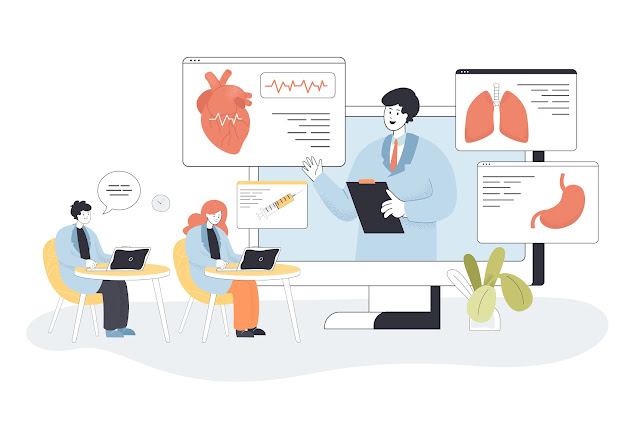Navigating the Adoption Landscape for Electronic Medical Records (EMR) Software
The adoption of EMR software (Electronic Medical Records) stands as a pivotal journey toward efficiency, accuracy, and enhanced patient care. As the medical landscape embraces the digital era, understanding the nuanced timeframe for adopting EMRs becomes paramount for healthcare providers, hospitals, and healthcare systems. Let's delve deeper into the intricacies of this transformative process and explore the key factors that influence the timeline for seamless EMR integration.
Embracing the Digital Shift: A Paradigm in Patient Care
EMR software serves as the linchpin in the digital revolution sweeping through healthcare. Beyond mere record-keeping, these systems empower medical professionals with instant access to comprehensive patient histories, fostering quicker diagnoses and more effective treatments. In this dynamic era of Digital Healthcare, EMRs play a pivotal role in ushering in an age of connectivity and data-driven decision-making.
The Symbiosis of EMRs and Key Players
LIMS Software: Bridging the Clinical and Laboratory Gap
In laboratory-intensive healthcare settings, the synergy between LIMS software and EMRs is transformative. This integration ensures a seamless flow of data between clinical and laboratory processes, enhancing overall efficiency and expediting diagnostic procedures.
EHR Healthcare: A Holistic Patient Journey
The integration of EHR healthcare with EMRs creates a comprehensive view of a patient's health journey. This interoperability ensures a unified approach to managing patient data across diverse healthcare settings, ultimately improving continuity of care.
Decoding the Time Factors: From Practice to Hospital Integration
Practice Management Software: A Prelude to EMR Adoption
The journey towards adopting EMRs often commences with the integration of practice management software. Beyond simplifying appointment scheduling and billing, this software acts as a gateway for the seamless incorporation of EMRs into daily medical practices.
Lab Software: A Critical Node in the Adoption Timeline
In laboratory-centric environments, the integration of lab software becomes a critical factor in the overall timeline of EMR adoption. Ensuring compatibility and smooth data exchange between EMRs and lab systems is imperative for a successful transition.
Hospital Management Software: The Culmination of Digital Integration
The final frontier in achieving full-fledged EMR integration lies in the adoption of Hospital Management Software. This comprehensive solution oversees various aspects of hospital operations, cementing EMRs as an integral part of the overarching healthcare infrastructure.
The Tapestry of Influential Factors
Organizational Readiness: Setting the Stage for Success
The readiness of a healthcare organization to embrace digital transformation is foundational to the swift adoption of EMRs. Adequate training, robust infrastructure, and well-crafted change management strategies play pivotal roles in ensuring a seamless transition.
System Customization and Integration: Tailoring Solutions to Unique Needs
No two healthcare settings are alike, demanding a bespoke approach to system customization and integration. The complexity of this process can significantly influence the time required for the seamless adoption of EMRs.
Regulatory Compliance: Navigating the Compliance Landscape
In the intricate tapestry of healthcare, compliance with industry standards and regulations is non-negotiable. Navigating this landscape diligently is a crucial factor that can impact the overall timeframe for EMR adoption.
Realizing the Benefits: A Strategic Investment
While the adoption of EMRs may pose initial challenges, the ensuing benefits far outweigh the hurdles. From enhanced patient care and improved accuracy to streamlined administrative processes, the investment in EMRs proves to be a strategic endeavor for healthcare providers committed to delivering optimal healthcare services.
Conclusion
In conclusion, the journey toward adopting EMR software is a transformative odyssey, marked by careful planning, customization, and an unwavering commitment to excellence. From integrating LIMS software to embracing Hospital Management Software, the path toward a digital healthcare future is illuminated by a dedication to efficiency, accuracy, and patient-centric care.
Related Articles:
How EHR Software Reduces Practice Costs Effectively?
Fostering Stronger Patient Relationships through EMR Software in Healthcare
Digital Focus in Healthcare: Workflow with LIMS and Digital Solutions
Essential Components for an Effective Plastic Surgery EMR Software
Navigating the Evolution of Technology in Health Services: Exploring the Pros and Cons
LIMS: The Good, the Bad, and the Ugly - A Comprehensive Analysis
Choosing the Best Electronic Medical Records (EMR) Software: A Comprehensive Guide
How to Choose the Best Dental Practice Management Software: A Comprehensive Guide
Random Blood Sugar (RBS) Report Format: Enhancing Diagnostic Precision and Patient Care
Ensuring Data Privacy and Security in Electronic Health Records
Future of Digital Healthcare: A Visionary Perspective on EHR, PACT, and More
%20Software.png)



Great post! The insights into the adoption of EMR software are very informative, especially with the growing need for digital solutions in healthcare. This will be extremely helpful for clinics looking to upgrade their systems!"
ReplyDeleteFor The Eye Foundation Hospital in Bangalore:
"The Eye Foundation in Bangalore is a trusted name for top-quality eye care with a dedicated team of specialists and advanced technology. Highly recommended for those seeking professional and reliable vision care!
Eye Hospital in Bangalore